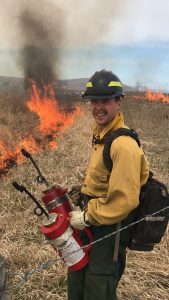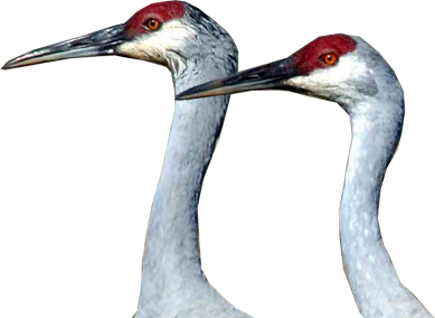The Small Grants Getting Wetland Conservation on the Ground in the West in a Big Way
NAWCA, or the North American Wetlands Conservation Act, was passed in 1989 to protect, restore, and enhance wetland habitats for birds. The NAWCA program provides matching grants to wetlands conservation projects in the United States, Canada, and Mexico. For more information, check out the NAWCA website.

One day, Liam O’Connor might be found reseeding a Waterfowl Production Area with a mix of native grasses and forbs. The next, he could be using prescribed fire as a tool to manage habitat. He could also be adjusting irrigation to fill wetland basins and flood wet meadows for migratory birds and other animals. O’Connor’s work might be varied, but it serves a common goal: fighting invasive species and conducting restoration that maximizes the availability and quality of wildlife habitat in Montana’s Mission Valley.

Liam O’Connor
A good chunk of funding that powers O’Connor’s varied work was acquired through the North American Wetlands Conservation Act (NAWCA) Small Grants program. Pheasants Forever, for which O’Connor works as Coordinating Wildlife Biologist, is part of a suite of partners (including the U.S. Fish and Wildlife Service and Montana Fish, Wildlife and Parks) that applied for a NAWCA Small Grant in 2019 to restore and enhance habitat across the Mission Valley. The landscape is a patchwork of public, private, and tribal land with a long history of agriculture and an even longer history of diverse wetland and upland habitat for species ranging from waterfowl to grizzly bears.
In recent years, the Mission Valley has been experiencing development pressure from western Montana’s rapidly growing population. With development comes increased pressure on water and wetlands—and invasive plant species that threaten both. That’s where NAWCA comes in.
“We use a variety of tools to maintain and enhance upland and wetland habitats in this valley so it continues functioning for a wide range of species,” O’Connor said. “NAWCA allows us to access and apply those tools at a greater capacity.”
NAWCA has two programs: Small Grants (up to $250,000), and Standard Grants (up to $3 million). They each require a 1:1 match in contributions from partners. This enables groups to leverage other funding sources and ensures a strong partnership is developed to support the work. Because Standard Grants are designed for large projects, sourcing enough match dollars can be challenging. NAWCA Small Grants are a much more practical option for projects like the one in the Mission Valley that emphasize targeted conservation on a local scale.
The funding received by Pheasants Forever and its partners allows the group to maximize the wetland conservation work in the Mission Valley—thus keeping O’Connor busy enhancing habitat for the wildlife that calls the Mission Valley home.
The IWJV can assist applicants with advanced planning of a NAWCA grant in several ways, including:
- Understanding the NAWCA process, criteria, and scoring.
- Providing guidance toward developing a successful proposal.
Learn more about how the IWJV can help partners apply for NAWCA Standard and Small Grants here.

